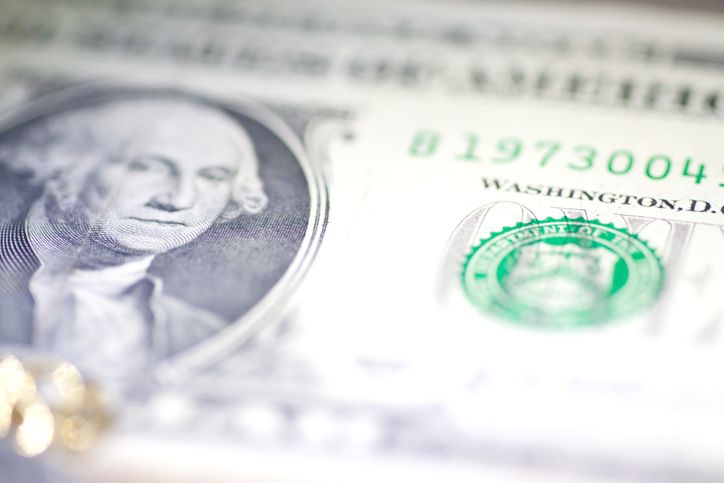During the week the peso depreciated 2.14% or 44 cents, closing at 21.30 pesos per dollar, with the exchange rate touching a minimum of 20.5524 and a maximum of 21.4181 pesos per dollar.
The peso accumulates three consecutive weeks of significant losses against the dollar, accumulating a depreciation of 6.76% or 1 peso and 34 cents in this period.
In the last three weeks, the peso is the second most depreciated currency, after the Turkish lira that accumulates a depreciation of 7.09% and followed by the Brazilian real that loses 5.66% in the period.
From a technical point of view, the exchange rate has strongly pierced the resistance indicated by the 200-day moving average that stands near 21.17 pesos per dollar, a movement that opens the door to a depreciation towards the level of 21.50 pesos per dollar. dollar in subsequent sessions and from there to the psychological level of 22 pesos per dollar.
Exchange rate downward correction sessions cannot be ruled out.
The peso
During the week, the depreciation of the peso was mainly due to the following factors:
First factor
The market continues to speculate that the Federal Reserve could adopt a less flexible monetary stance in the coming months as a result of the accelerated economic recovery in the United States, which in turn could push inflation up.
During the week, Fed Chairman Jerome Powell acknowledged that temporary inflationary pressures could be observed, which fueled speculation, raising interest rates in the secondary market.
Positive economic indicators were also published in the United States, highlighting the creation of 379 thousand job positions during February, close to double that expected by the market. The maximum weekly level of the exchange rate was reached in the minutes after the publication of the statistics of the US labor market.
The yield rate on the 10-year Treasury bonds closed with a weekly increase of 15.2 basis points, reaching 1.56%, accumulating an increase of 49 basis points in the last five weeks (since the end of January).
For its part, the dollar weighted index advanced 0.91% and accumulates an increase of 1.45% in the last five weeks.
Second factor
Risk perception regarding Mexico remains high.
This week the reform to the Electricity Industry Law was approved in the Senate, which is expected to discourage investment in the sector, as well as foreign direct investment, as it is a reform that seeks to reduce the participation of individuals in generation of electric energy and in renewable energies.
Technology companies
It is important to add that during the week the performance of the foreign exchange market was different from that observed in other financial markets.
In the capital market, gains were observed in most indices globally, with the notable exception of companies in the technology sector in the United States.
The S&P 500 closed the week with an advance of 0.81% and the Nasdaq with a decline of 2.06 percent.
In Mexico, the IPC of the Mexican Stock Exchange closed with a gain of 3.92 percent.
The oil
On the other hand, in the raw materials market, oil prices closed the week with significant gains, mainly driven by the decision of OPEC and allied countries to continue producing below capacity, giving priority to an increase in prices in the international oil market despite the increased risk of losing market share.
During the week, the price of WTI closed with an increase of 7.64%, trading at 66.20 dollars per barrel, reaching a maximum of 66.40 dollars, a level not seen since April 24, 2019.
Brent closed with an increase of 5.07%, trading at 69.48 dollars per barrel. In the last three weeks, the WTI accumulates an increase of 11.28%, while the brent accumulates an increase of 11.31 percent.
Most of the increase in the price of oil was observed during the last two sessions of the week, after the meeting of OPEC and allies took place on Thursday.
At that meeting, the member countries decided to maintain the cuts to oil production, contrary to the expectation of an increase in production between 1 and 1.5 million barrels from April and only an increase in production of 150 thousand barrels was allowed. for Russia and Kazakhstan together.
The exchange rate and the peso
The upward movement in oil prices did not have an observable effect on the peso-dollar exchange rate. However, three of the four currencies that appreciated in the week were from oil-producing countries: the Norwegian krone advanced 1.49%, the Canadian dollar with 0.62% and the Russian ruble with 0.55 percent.
On the week, the euro hit a low of 1.1894 and a high of $ 1.2113 per euro. Finally, the euro peso touched a minimum of 24.7972 and a maximum of 25.4983 pesos per euro.
At the close, the interbank quotes for sale stood at 21.2990 pesos per dollar, 1.3848 dollars per pound and 1.1918 dollars per euro.
Gabriela Siller; PhD
Director of Economic-Financial Analysis.
Banco BASE
![]()

